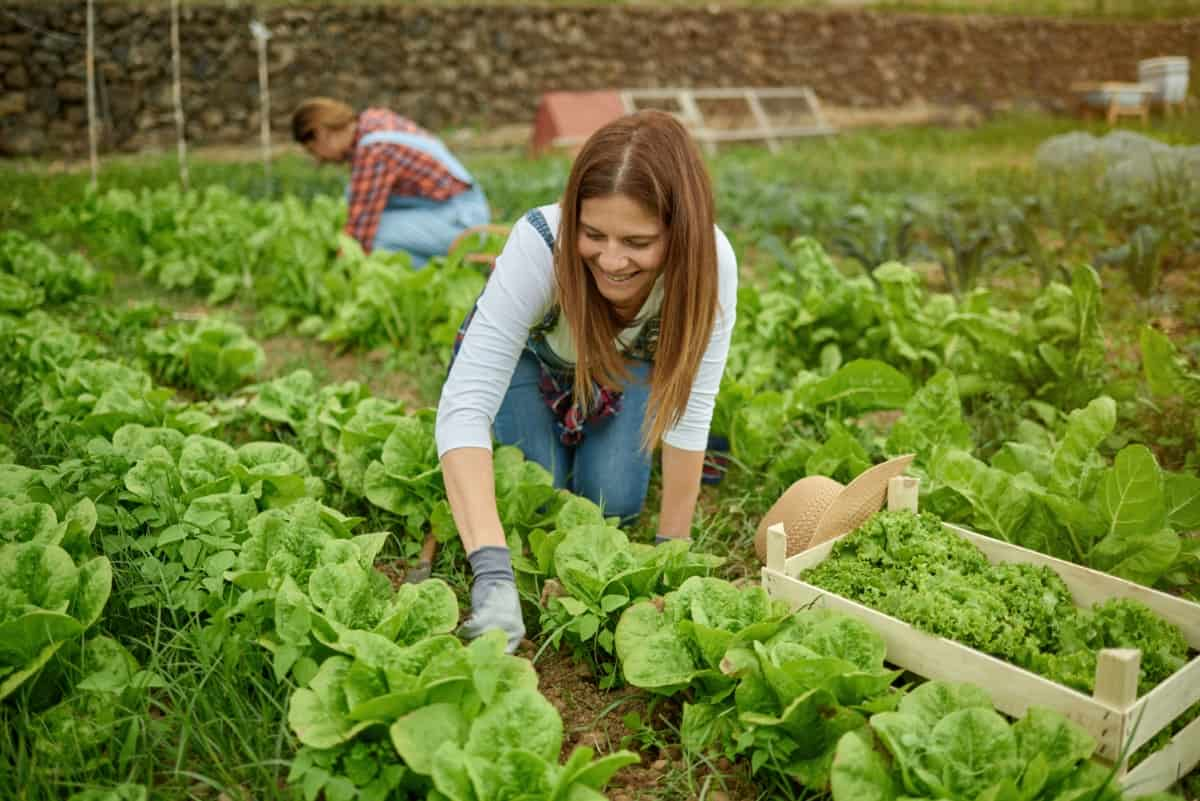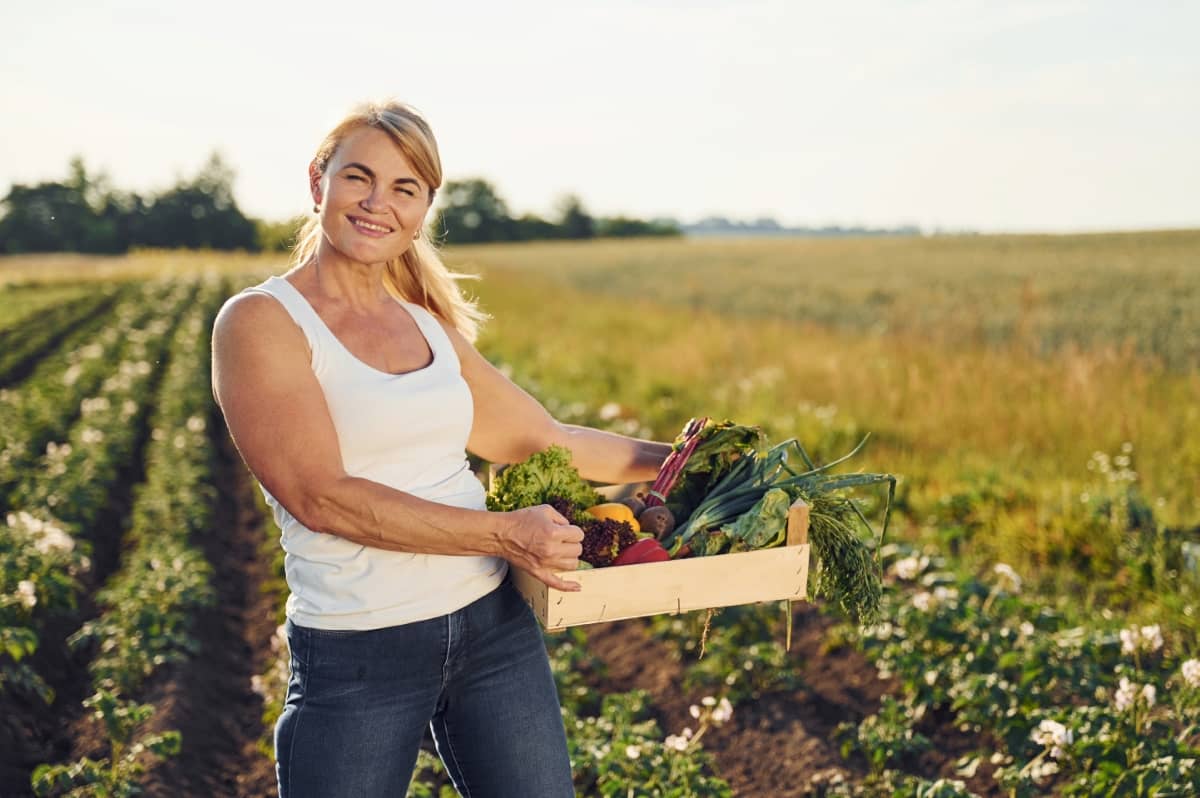The microclimates of Western California provide an ideal setting for year-round vegetable gardening. With its mild winters and warm, dry summers, this region can accommodate various vegetable crops, from leafy greens to heat-loving tomatoes and peppers. Nonetheless, a successful garden requires knowledge about the best times to plant each vegetable and how to cater to their specific needs. This article will dive into the various facets of gardening in Western California, from a year-round gardening schedule to tips on water efficiency and soil requirements.

Western California Vegetable Gardening
Optimal Planting Dates for Western California Vegetable Crops
| Vegetable | Early Spring Planting | Late Spring Planting | Summer Planting | Fall Planting |
| Asparagus | January – February | |||
| Beans | April – June | |||
| Beets | January – March | September – October | ||
| Broccoli | January – February | August – September | ||
| Cabbage | January – February | August – September | ||
| Carrots | January – March | September – October | ||
| Corn | April – June | |||
| Cucumbers | April – June | |||
| Eggplant | April – June | |||
| Garlic | October – November | |||
| Lettuce | February – March | April – May | September – October | |
| Onions | January – February | |||
| Peppers | April – June | |||
| Potatoes | February – March | |||
| Pumpkins | April – June | |||
| Radishes | February – March | April – May | September – October | |
| Spinach | January – March | September – October | ||
| Tomatoes | April – June | |||
| Zucchini | April – June |
Year-round Vegetable Gardening Schedule for Western California
Understanding the Western California planting calendar is the first step toward a successful vegetable garden. With the region’s Mediterranean climate, you can essentially grow vegetables year-round. Winter is the perfect time for planting cool-season crops like kale, lettuce, and spinach.
Start indoor seeding of warm-season vegetables like tomatoes and peppers in early spring. Your garden should be bustling with activity by summer, including growing and harvesting heat-loving crops like squash and corn. As fall approaches, you can begin preparing the soil and sowing seeds for your winter vegetable garden, focusing on crops like broccoli, cabbage, and cauliflower that can withstand colder temperatures. Understanding and tailoring this schedule to your specific microclimate will enable you to have a productive garden throughout the year.
Best Vegetables to Grow in Western California’s Mild Climate
With Western California’s mild climate, a wide variety of vegetables can thrive. Leafy greens like lettuce, spinach, and kale can be grown throughout the year, with the cooler winter months offering an especially productive period. Root vegetables like carrots, radishes, and beets also perform well in this region, particularly when planted in the cooler fall and winter months.
As for warm-season crops, tomatoes, peppers, and eggplants are among the top performers, taking full advantage of the warm, dry summers. However, it’s crucial to note that even within Western California, there are numerous microclimates. Coastal areas may not get as hot as inland regions, affecting what crops will thrive best.
Spring Planting Guide for Western California Vegetable Gardens
Spring in Western California is a busy time in the vegetable garden. In early spring, you should start seeds indoors for warm-season crops like tomatoes, peppers, eggplants, and cucumbers. Crop readiness for outdoor transplanting occurs once the threat of frost is gone, usually in late spring. Simultaneously, cool-season crops such as spinach, lettuce, and peas can be directly planted in the garden. This coexistence of cool-season and warm-season crops creates a varied and fruitful spring garden.
In case you missed it: East Texas Vegetable Gardening/Planting Calendar: Month-Wise Crops

Summer Vegetable Varieties for Western California’s Coastal Region
Summer is the time for heat-loving crops in Western California. Some of the best summer vegetable varieties for the coastal region include squash, corn, beans, and cucumbers. These plants love the warmth and sunshine of summer but will also appreciate the milder temperatures and cooler nights that the coastal region provides. Tomato varieties resistant to mildew, such as ‘Early Girl’ and ‘Cherokee Purple,’ are excellent choices for the coastal region, where summer fog can create humid conditions.
Fall Planting Calendar for Western California Vegetable Crops
| Vegetable | Spring Planting Dates | Fall Planting Dates |
| Beans | April-May | July-August |
| Beets | February-May | August-October |
| Broccoli | January-April | July-October |
| Brussels Sprouts | January-April | June-August |
| Cabbage | January-April | July-September |
| Carrots | January-June | August-December |
| Cauliflower | January-April | July-September |
| Celery | February-April | August-October |
| Corn | March-June | Not recommended |
| Cucumbers | March-May | July-August |
| Eggplant | March-May | Not recommended |
| Garlic | January-April | October-November |
| Kale | January-May | July-December |
| Lettuce | February-May | August-October |
| Onions | January-April | August-October |
| Peas | January-April | July-November |
| Peppers | March-May | Not recommended |
| Potatoes | February-April | August-September |
| Pumpkins | March-May | Not recommended |
| Radishes | February-May | August-December |
| Spinach | February-April | September-November |
| Squash (summer) | March-May | July-August |
| Squash (winter) | March-May | Not recommended |
| Tomatoes | March-May | Not recommended |
| Turnips | February-April | July-November |
| Zucchini | March-May | July-August |
Water-Efficient Vegetable Gardening Tips for Western California
Given the water scarcity in many parts of California, efficient water use is necessary for the region’s gardeners. Deep watering is one of the best strategies to conserve water. This method encourages plants to develop deep root systems, making them more resilient and less water-dependent. Mulching is another effective way to retain soil moisture, reduce evaporation, and cool the soil during hot summer.
Drip irrigation systems can also be a worthwhile investment. These systems deliver water directly to the plant’s root zone, minimizing waste and reducing the risk of disease caused by wet foliage. In addition, selecting drought-tolerant plant varieties can help conserve water. Many heirloom vegetables and plants native to Mediterranean climates are adapted to survive with less water and can be excellent choices for the Western California vegetable garden.
Specific Soil Requirements for Successful Western California Vegetable Gardens
Vegetables require well-draining soil rich in organic matter. Adding compost annually will improve soil texture and fertility, supplying your plants with essential nutrients. Since many parts of Western California have clay or sandy soils, compost is crucial for improving soil structure, whether to break up clay or help sandy soil retain moisture.
Additionally, a soil pH test can be beneficial. Most vegetables prefer slightly acidic to neutral pH levels (6.0-7.0), and adding lime or sulfur can help adjust your soil’s pH as needed. Ensuring your soil meets these conditions will set the stage for a thriving vegetable garden.
Common Pests and Diseases in Western California Vegetable Plants
Pest and disease management is an ongoing challenge for Western California vegetable gardeners. Common pests include aphids, snails, and whiteflies, while powdery mildew and tomato blight are prevalent diseases.
In case you missed it: North Texas Vegetable Gardening/Planting Calendar: Know What to Grow Monthwise

Effective strategies for controlling these threats include practicing crop rotation, encouraging beneficial insects by planting flowers, using organic pesticides, and promptly removing diseased plants to prevent the spread of infection. For some diseases, selecting resistant varieties can be the best course of action. For instance, certain tomato varieties are bred for resistance to verticillium and fusarium wilt, two common diseases in the region.
Conclusion
Vegetable gardening in Western California can be a year-round activity filled with variety and abundance. By understanding the region’s planting calendar, selecting suitable vegetables for the climate, managing water efficiently, optimizing your soil, tackling common pests and diseases, and utilizing companion planting strategies, you can enjoy a productive and sustainable garden in this unique gardening region.
- Feed Your Flock for Less: Top 10 Tips to Save on Chicken Feed
- Ultimate Guide to Ossabaw Island Hog: Breeding, Raising, Diet, and Care
- Hatching Answers: The Top 10 Reasons Your Chickens Aren’t Laying Eggs
- Eggs and Economics: Breaking Down the Cost of Raising Backyard Chickens
- Defend Your Greens: Proven Methods to Keep Iguanas Out of Your Garden
- Ultimate Guide to Cinnamon Queen Chicken: A Comprehensive Guide for Beginners
- Ultimate Guide to California Tan Chicken: Breeding, Raising, Diet, Egg-Production and Care
- Ultimate Guide to Marsh Daisy Chicken: Breeding, Raising, Diet, and Care
- 10 Types of Chicken Farming Businesses You Can Start for Profits